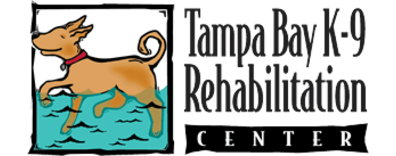Tampa Bay K9 Rehabilitation Center
Orthopedic Post-Operative Recovery Therapy
As in humans, post-operative rehabilitation allows the patient to heal faster and more completely with less pain and greater long-standing beneficial effects.

There are several reasons why a pet may need recovery therapy. They include surgery, injury, arthritis, or other age-related issues. Helping the animal to return to normal function is important. Apart from improving your pet’s quality of life, your companion will enjoy being active again. Rehabilitation makes a huge difference when it comes to restoring function after surgery. Typical post-operative sessions last from 3-12 visits. Neurologic surgery may require weeks to months of rehab therapy.
POST-OPERATIVE RECOVERY THERAPY
Just like with human beings, surgery for pets is usually just the first step when it comes to recovery. When an animal goes through surgery, it will often need extensive rehabilitation. The rehabilitation helps it to experience the full benefits of the healing process. It will also involve different procedures. These depend on the type of animal and type, location, and extent of the surgery. The therapy often involves strengthening and stretching alongside other treatment techniques.
BENEFITS OF POST-OPERATIVE THERAPY
Rehabilitation helps to treat pets that have undergone orthopedic surgery. The therapy helps pets with fracture repair, cruciate ligament repair, and hip surgery. Hip dislocation, knee surgery, and valgus deformity also benefit from this therapy. Post-operative rehabilitation allows the pet the best chance for effective use of the limb. The therapy also helps to ease the recovery process. The initial stage of the therapy is aimed at minimizing pain and swelling. It also helps to keep the mobility of the joint.
RESULTS OF THE REHABILITATION
The long-term success of an operation will depend on rehabilitation and aftercare. Post-operative therapy helps to increase flexibility, strength, and function. Improving function means that the pet will have the best chance to be able to walk, play, climb, sleep, and act like any other animal. The pet can return to their favorite activities after this type of care in many cases. The different stages of recovery therapy include everything from exercises to medication therapy. An effective recovery plan is created for each animal.
THE PROCESS OF REHABILITATION
Surgery is the first step when it comes to returning to full function. After the procedure, the rehabilitation practitioner will determine the best recovery plan. The extent of the injury will determine how long the process will take. Please note that different pets progress through this treatment at different rates. The goal is to ensure that the pet experiences long-term comfort, mobility, and flexibility with no pain.
REGULAR OFFICE VISITS
After discharge from the pet clinic, the pet owner will receive information about the different stages of the recovery process. There are things that the pet owner will need to do to ensure that the recovery continues smoothly. It is important to continue with regular office visits for assessment of the recovery progress. During the visits, the veterinarian can look out for any potential problems.
In some cases, physical rehabilitation may be an alternative to surgery. Therapy can help to treat some issues, making it unnecessary for the pet to undergo surgery. The pet can recover a range of motions while improving balance and coordination. When seeking pet post-operative therapy, consult veterinarians with the right experience and credentials.
Many orthopedic surgeries are offered at our facility as well as the post-operative rehabilitation.
